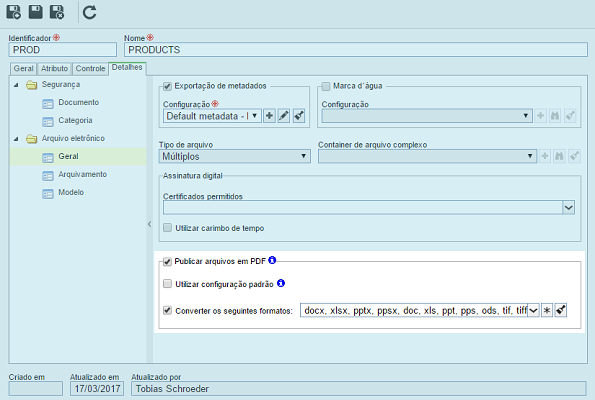
The image you posted has (from Imagemagick's identify -verbose): I don't know how Adobe uses tag 37724, but I don't think its presence The TIFF library handles legitimate but unrecognised tags. Wrong with the TIFF file per se, it's just a quirk in the way
Tif to iso converter pdf#
And stuff the image into PDF using the GILĪFAIK the warning message you saw does not indicate anything And I can import and display the image in When I use the Generic Image Library (outside Qt),Įverything works fine, in the sense that I can load and extract the alpha channelĪnd image data. I should have said the sample TIFF was created in and saved fromĪdobe Photoshop. We're using Qt Creator 3.2.1 (opensource)īased on Qt 5.3.2 (MSVC 2010, 32 again VRonin, store uncompressed image data in std::vectorsĬopy(cmyk_ptr, cmyk_ptr + (info._height * info._width * 4),std::back_inserter(strImageDataUncompressed())) Ĭopy(alpha_ptr, alpha_ptr + (info._height * info._width), std::back_inserter(strImageDataAlpha())) Īny ideas would be gratefully received. *alpha_ptr = reinterpret_cast(planar_view_get_raw_data(view(dst_planar_image), 4)) *cmyk_ptr = reinterpret_cast(interleaved_view_get_raw_data(view(dst_cmyk_image))), extract CMYK and alpha mask from CMYKAĬopy_and_convert_pixels( view( cmyka_img ), view( dst_cmyk_image ), convert_cmyka_to_cmyk() ) Ĭopy_and_convert_pixels(view(cmyka_img), view(dst_planar_image)) ? std::vector strImageDataUncompressed ĭst_planar_image(cmyka_img.dimensions())
Tif to iso converter how to#
Using GIL we are able to split the uncompressed alpha and CMYK channel data out from the CMYK into std::vector variables, but I have no idea how to map/convert this into a QImage structure which displays correctly. hasAlphaChannel() returns true.ĭoes anyone out there have any suggestions as to how I might address this, for example using GIL, or another TIFF reader plugin? Using QImage::load(test.png) converts the tiff file to a QImage::Format_Indexed8 (format 3) QImage, and the image is partly transparent. hasAlphaChannel() returns true.Ĭlicking again on the leftmost image and selecting 'test.png' produces the following (GOOD - image is partly transparent): Using QImage::load(test.tif) converts the tiff file to a QImage::Format_ARGB32 (format 5) QImage, but the image is opaque. On first startup this displays as shown below, with a transparent butterfly overlaid on a chequered background:Ĭlicking on the leftmost (butterfly) image and selecting 'test.tif' produces the following (BAD - image is completely opaque): I've been testing this using the Qt 5.3 Image Composition Example distributed with Qt Creator 3.2.1 In this case, the image::load() converts to a QImage::Format_Indexed8. Testing using a PNG version of the image ( test.png) produces the desired results, where the image is displayed as partly transparent. They do not encode information that is specific to the application software, hardware, or operating system used to create or view the document.We have a transparent, LZW compressed TIFF file ( test.tif) which I'm trying to display as an ARGB32 image, with transparency, but it displays as an opaque image it appears that the image::load() loses transparency on conversion from TIFF CMYKA to QImage::Format_ARGB32. A PDF file can be any length, contain any number of fonts and images and is designed to enable the creation and transfer of printer-ready output.Įach PDF file encapsulates a complete description of a 2D document (and, with the advent of Acrobat 3D, embedded 3D documents) that includes the text, fonts, images and 2D vector graphics that compose the document. PDF is a file format developed by Adobe Systems for representing documents in a manner that is separate from the original operating system, application or hardware from where it was originally created.


Each TIFF file begins with an image file header which then points to an image file directory which contains the image data and image information. if it is MM, then you have Motorola byte ordering and likewise if it is II it means you have Intel byte ordering. The byte order is either Motorola or Intel depending on the first word. It is a popular format for high-colour-depth images and it has also been adapted to accommodate greyscale images.Ī TIFF file is made up of many different blocks which define the palette data or the LZW-compressed body among other things. It was created due to the popularity of scanners and was thought-up to become the standard scanned image file format. Tiff was originally created by a company called Aldus, and is now owned by Adobe systems, it is a file format for storing images, including line art and photographs.


 0 kommentar(er)
0 kommentar(er)
